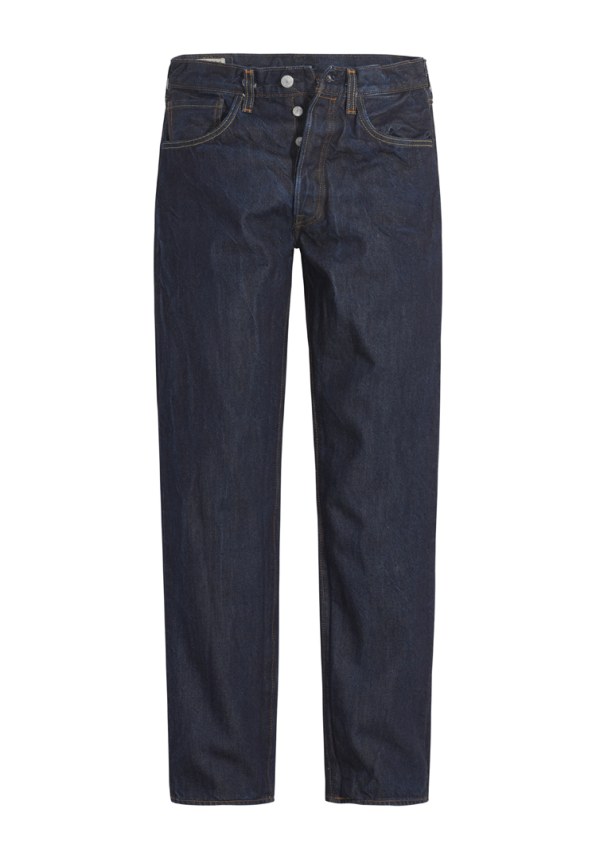Sweden’s Renewcell invented a process to dissolve used denim into a new fabric; Levi’s is now using the material in its most iconic style.
For years, the fashion industry has been trying to recycle fabrics similar to the way we currently recycle aluminum cans or paper. Levi’s has solved a small piece of that puzzle.

When you buy a pair of Levi’s iconic 501 jeans starting this year, there’s a good chance they’ll be made from discarded jeans that have been dissolved with chemicals and then transformed into a new fabric by a Swedish company called Renewcell. The heritage American brand has been experimenting with recycled materials for several years by creating small capsule collections. But Levi’s believes Renewcell’s cutting-edge fabric is now ready to scale, so it has incorporated it into one of its most popular denim styles, and hopes to roll out more garments made with this material soon.
Every year, the $1.3 trillion global fashion industry churns out more than 100 billion garments, the vast majority of which are made by extracting new raw materials like cotton and oil (which is used to create synthetic materials like nylon and polyester). There’s currently no reliable way to recycle fabrics at scale, so organizations around the world are trying to come up with solutions. In Hong Kong, for instance, the government developed the Green Machine, which shreds clothing into tiny fibers, separates different materials, then spins them back into yarn. Other companies, like Evrnu, Circ, and Sulzer, use chemicals to dissolve fabric into polymers, then transform them back into fibers.

Renewcell, founded in Sweden in 2012, also uses chemicals to recycle fabric. It was started by a team of scientists from the Royal Institute of Technology in Stockholm who were researching how to break down cellulose, the building block of organic fibers like wood, cotton, and viscose, a fabric made from wood pulp. “One of Sweden’s biggest industries is forestry, so we have expertise in understanding wood,” says Harald Cavalli-Björkman, Renewcell’s chief growth officer. “There are established methods for chemically breaking down wood into cellulose to recycle it. With Renewcell, we’re tweaking the formula to make it work for cotton and viscose.”ADVERTISING
Over the past decade, Renewcell has been working on a process to transform old clothes into new clothes. It buys used garments and textile production waste that contains a large proportion of cotton and viscose; jeans are a good candidate, because many are made largely from cotton with a small quantity of stretchy fibers like nylon. A machine removes buttons and zippers, then remaining textiles are shredded and chemically dissolved. Any contaminants and noncellulosic content (like nylon) is separated out. What’s left is pure cellulose. This new material, which Renewcell calls Circulose, is packaged into bales and can then go through the apparel manufacturing supply chain as a replacement for cotton, viscose, or synthetic fibers.

Paul Dillinger, head of global product innovation at Levi Strauss & Co., is tasked with exploring the latest sustainable solutions in the fashion industry. In 2018, he visited Renewcell’s new factory in Kristinehamn, Sweden, where 20 full-time employees worked on this fabric-to-fabric recycling process. Two things stood out to him: First, Circulose appeared to be identical to virgin viscose, so it could be easily swapped into Levi’s denim supply chain. Second, the chemical recycling process seemed clean. “When you’re considering chemical recycling, you want to make sure that there aren’t any toxic chemicals that make their way into the fabrics,” Dillinger says. “But Renewcell’s factory must operate within Sweden’s very stringent environmental protection regulations. It was ultimately a very clean process, with no effluents coming out of the plant.”
In 2020 and 2021, Dillinger’s team launched small capsule collections of jeans made with Circulose, including the 502 for men and High Loose for women. “We were able to prove that Circulose was strong and durable enough to meet our denim standards,” Dillinger says. “But the big question was whether we could start using this material at scale.”

It was a big question: Levi Strauss & Co.—Levi’s parent company—generates $4.5 billion in annual sales and sells millions of jeans around the world. Fortunately, Renewcell was in the process of building a commercial-scale chemical recycling plant in Sundsvall, Sweden, that would be staffed by 100 employees and could generate up to 60,000 tons of Circulose a year. It goes live this year. “We’ve built this plant in a former wood pulp plant, repurposing a lot of the existing machinery,” says Cavalli-Björkman. “Our focus on recycling extends to our factories.”
Dillinger and his team decided to launch a version of the 501 for men and women made with Circulose, placing an order of tens of thousands of units. The jeans are currently made with a blend of Circulose and organic cotton, but as the new plant in Sundsvall is able to produce larger quantities of Circulose, Dillinger says that they will use more of the fiber in the jeans.
Levi’s has carefully tweaked the design of these 501s to make them easy to recycle using Renewcell’s process. For instance, the company has made the entire jean from cotton and viscose. This meant replacing pieces of the garment usually made from synthetic fibers—like labels, polyester pockets, and other details—with cotton alternatives. “The benefit of Renewcell’s chemical recycling process is that fabrics can be recycled infinitely without degrading the fibers,” Dillinger says.
Dillinger says these 501s are arguably the most sustainable jeans the company has made, allowing Levi’s to reduce its dependence on raw materials and making a big step toward creating a circular system, where its garments can be transformed back into clothes. But Dillinger also says that Renewcell isn’t the only sustainable technology he’s excited about. “There are lots of companies out there working on very exciting solutions,” he says. “We’re betting on many of them. As an industry, we’re not going to make strides unless everybody is innovating.”
…
This article first appeared in www.fastcompany.com
Seeking to build and grow your brand using the force of consumer insight, strategic foresight, creative disruption and technology prowess? Talk to us at +971 50 6254340 or mail: engage@groupisd.com or visit www.groupisd.com/story

